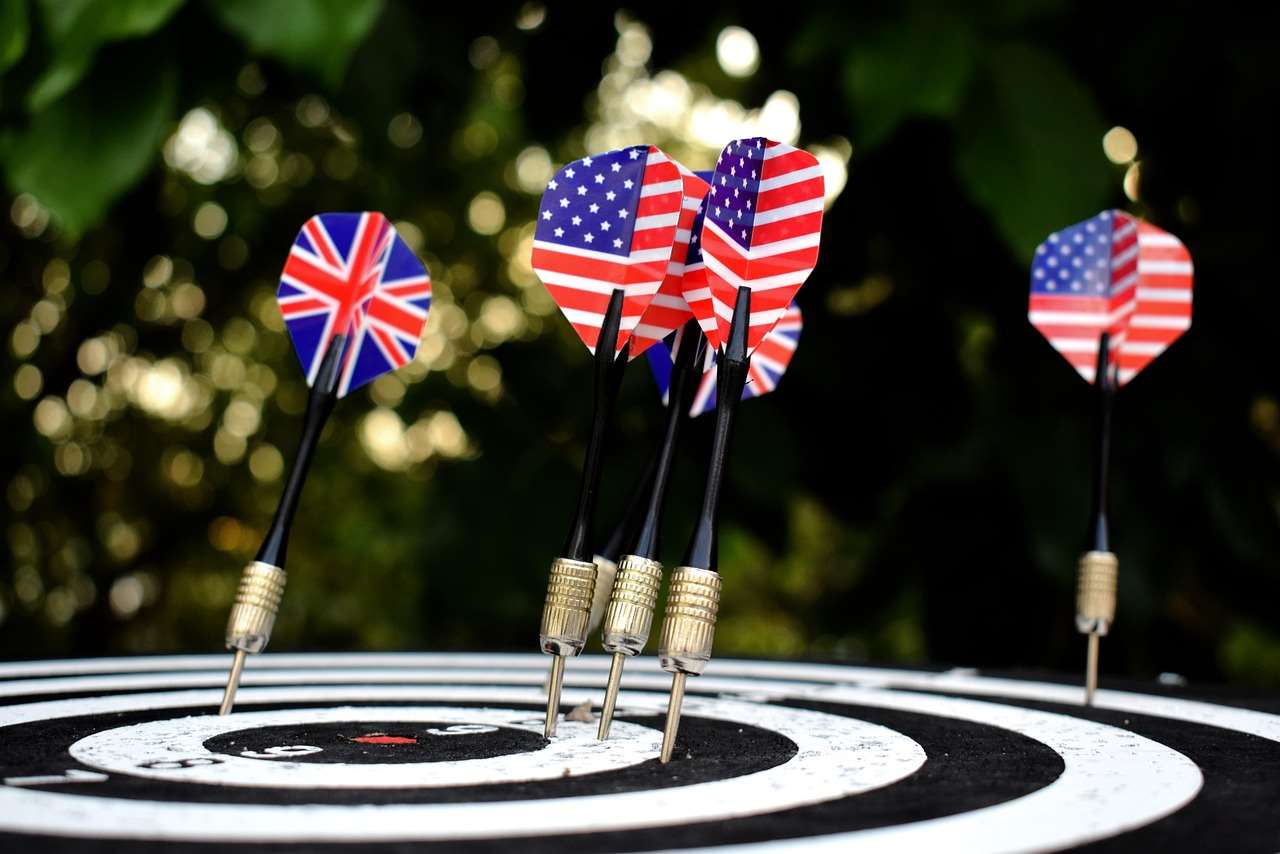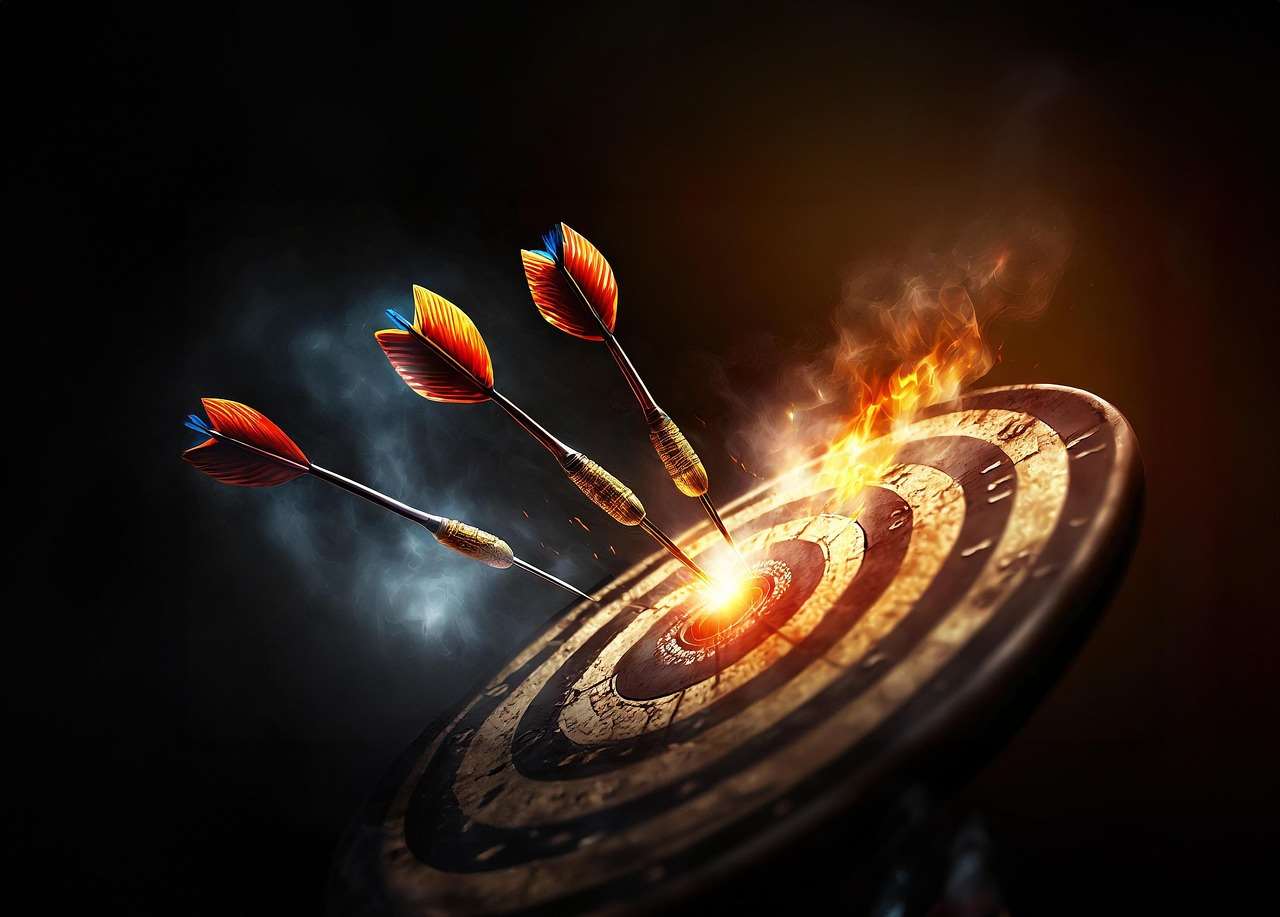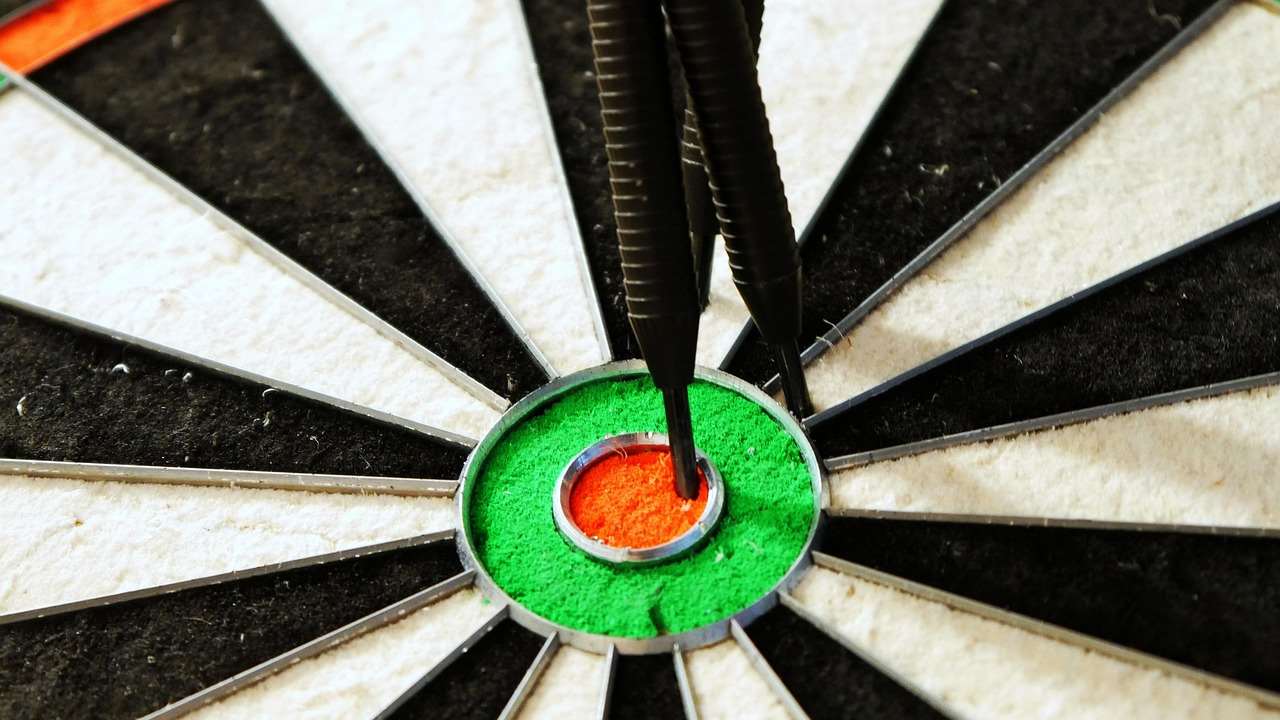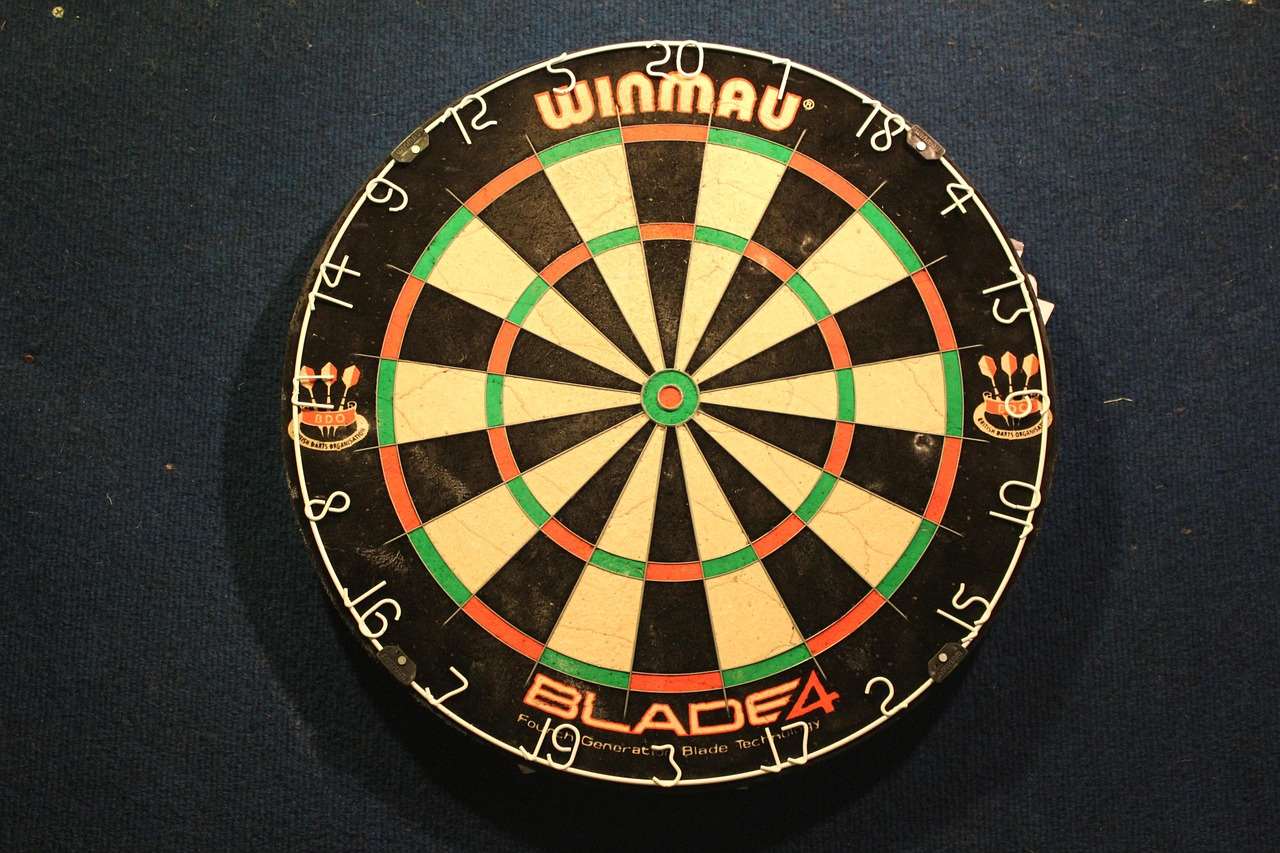Mastering dart flight design for recognition is crucial for consistent performance. This article will show you how to design flights that are not only visually distinct but also aerodynamically optimized for your unique throwing style. We’ll cover design elements, practical tips, and troubleshooting common issues to elevate your game.
⚠️ Still Using Pen & Paper (or a Chalkboard)?! ⚠️
Step into the future! The Dart Counter App handles all the scoring, suggests checkouts, and tracks your stats automatically. It's easier than you think!
Try the Smart Dart Counter App FREE!Ready for an upgrade? Click above!
The right dart flight can significantly impact your game. Beyond simply identifying your darts, dart flight design for recognition allows you to personalize your equipment, enhancing your confidence and focus. This isn’t just about aesthetics; it’s about optimizing performance.
Understanding the impact of flight shape, material, and even color on your throw is key. We’ll explore these factors, providing you with the knowledge to create custom flights that are uniquely yours. Beyond the design aspect, we will cover practical tips to ensure your flights stay in peak condition.

Dart Flight Design: Aesthetics and Performance
When it comes to dart flight design for recognition, the first thing to consider is how you want your darts to look. Do you prefer a simple, classic design, or something more bold and eye-catching? This is where your personal style comes in. However, aesthetics should be balanced with performance considerations. The shape, size, and material of your flights directly impact the flight path of your darts. Choosing a flight style that complements your throw is just as crucial as it looking good.
Flight Shapes and Their Impact
Several flight shapes exist, each affecting the stability and trajectory of your dart. Standard shapes include standard, kite, and pear shapes. Standard flights offer a good balance of stability and maneuverability. Kite flights provide increased stability, ideal for players who prefer a more consistent trajectory. Pear-shaped flights are less common but offer unique aerodynamic properties.
Experimenting with different flight shapes can significantly influence the way your darts behave. Keep track of your results to find the optimal shape for your throwing style. Remember to note the differences in grouping and overall flight path for each shape. For more in-depth guidance, you might find our guide on Dart point length and player preference helpful, as point length interacts with flight dynamics.

Materials Matter: Choosing the Right Flight Material
The material of your flights plays a crucial role in their durability and performance. Common materials include standard plastic, nylon, and polypropylene. Each offers a different level of flexibility, resilience, and overall weight.
- Standard plastic flights are affordable and readily available, but they tend to be less durable than other options.
- Nylon flights provide a good balance of durability and flexibility, offering better resistance to damage than standard plastic.
- Polypropylene flights are known for their exceptional durability and resistance to wear and tear, making them a popular choice for serious players.
The choice of material will affect not just the longevity of your flights but also their flight characteristics. Heavier flights might offer more stability, but they may also lead to slower dart speeds.
Flight Thickness and Stiffness
The thickness and stiffness of your flights also influence the flight path. Thicker, stiffer flights are generally more resistant to damage, but they could negatively impact maneuverability. Thinner, more flexible flights can be more susceptible to damage, but they can provide better responsiveness and control, especially in windy conditions. Finding the right balance here is key for optimizing your dart flight design for recognition.

Customizing Your Dart Flights: Adding Your Personal Touch
Personalization is a big part of what makes darts so enjoyable. One key aspect of dart flight design for recognition is the ability to add your personal touch. There are several ways to customize your flights. You can choose from a wide variety of colors, and even add custom designs or logos.
This doesn’t just make your flights more unique; it also helps you identify them quickly on the board. This is particularly helpful during tournaments or when playing with multiple people. Think about adding your initials, team logo, or even a small image that represents your personal brand.
Many manufacturers offer custom flight printing services, allowing you to create truly one-of-a-kind designs. This can be a great way to show off your personality and create a sense of ownership over your equipment. For more information on how to maintain your equipment, please visit our guide on Darts Equipment Maintenance Customization.
Color Coding for Easy Recognition
Using different colors for your flights is an effective method for quick dart flight design for recognition, especially if you’re using multiple sets of darts. A simple color-coding system can help you differentiate between your darts quickly and easily, saving you time and reducing confusion, particularly during intense matches.
Consider using bright, vibrant colors that stand out against the dartboard’s background. This enhances visibility and makes identifying your darts quicker and simpler.

Maintaining Your Flights for Optimal Performance
Even the best-designed dart flights will eventually wear out. Regular maintenance is crucial to ensure they maintain their shape and optimal performance. This includes cleaning your flights regularly to remove any dirt or debris that can accumulate.
Cleaning your flights can improve their aerodynamic properties, thereby impacting your game. For tips on Cleaning dart barrels tungsten and other materials, explore our related guides.
Regular inspection is also essential. Check your flights for any signs of damage such as tears or warping. Damaged flights can dramatically affect your throw, leading to inconsistencies and poor accuracy. Replacing them promptly prevents further issues and maintains your game’s consistency.
Proper storage is also important. Avoid leaving your darts exposed to extreme temperatures or humidity, as these can damage your flights and affect their shape. Learn more about maintaining your equipment in our detailed guide on Cleaning dart barrels professional darts.

Troubleshooting Common Issues with Dart Flights
Even with careful selection and maintenance, you might encounter issues with your flights. Understanding these common problems and their solutions can help you avoid frustration and maintain a smooth game.
- Flights bending or warping: This often happens due to improper storage or exposure to heat. Avoid leaving your darts in direct sunlight or hot cars.
- Flights tearing: This is more common with thinner, more flexible flights. Consider using a thicker material or being more careful when throwing your darts.
- Inconsistent flight paths: This could indicate damaged or improperly sized flights. Check your flights for damage and ensure they are properly secured to your barrels.
If you’re experiencing inconsistencies in your throws, it’s important to check your equipment systematically. Start by inspecting your flights and replace them if necessary. This meticulous approach can pinpoint the exact problem and allows for targeted solutions. If the problem persists, consider the influence of your dart point style and follow through or barrel grip. Proper technique can make all the difference.
Mastering dart flight design for recognition isn’t just about aesthetics; it’s about optimizing your performance. Consider the techniques discussed, experiment with different styles, and always maintain your equipment. Remember to check out our guide on barrel grip techniques for further enhancement of your dart game.
Conclusion
Designing flights that are both visually appealing and aerodynamically sound is a crucial aspect of improving your dart game. By understanding the factors involved in dart flight design for recognition, choosing the right materials and shapes, and maintaining your flights properly, you can significantly enhance your game’s consistency and accuracy. Remember to experiment, personalize, and find what works best for your unique throwing style. Start customizing your flights today and experience the difference!
Hi, I’m Dieter, and I created Dartcounter (Dartcounterapp.com). My motivation wasn’t being a darts expert – quite the opposite! When I first started playing, I loved the game but found keeping accurate scores and tracking stats difficult and distracting.
I figured I couldn’t be the only one struggling with this. So, I decided to build a solution: an easy-to-use application that everyone, no matter their experience level, could use to manage scoring effortlessly.
My goal for Dartcounter was simple: let the app handle the numbers – the scoring, the averages, the stats, even checkout suggestions – so players could focus purely on their throw and enjoying the game. It began as a way to solve my own beginner’s problem, and I’m thrilled it has grown into a helpful tool for the wider darts community.